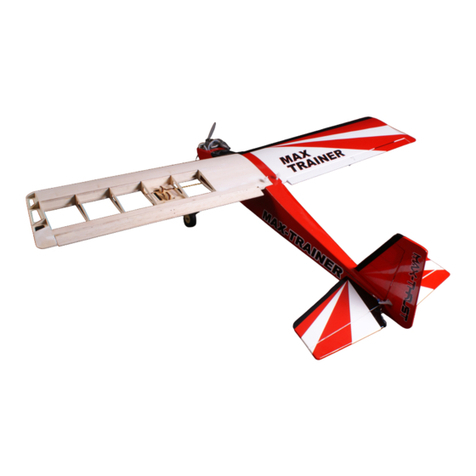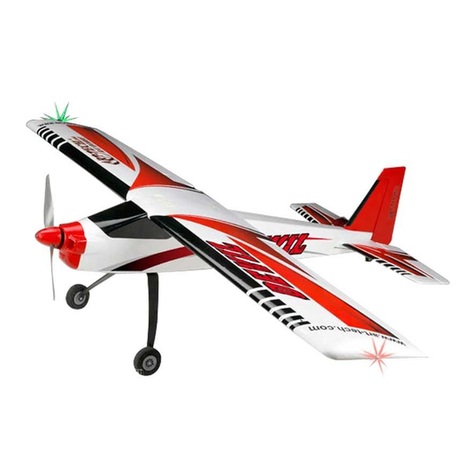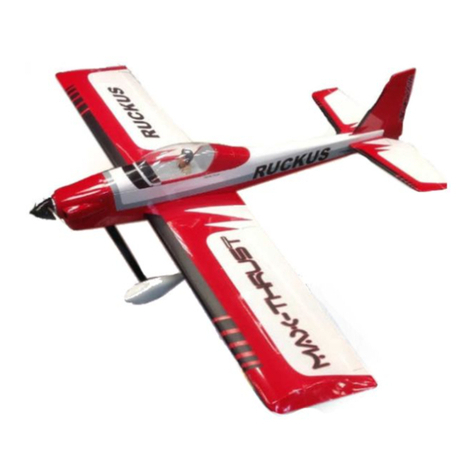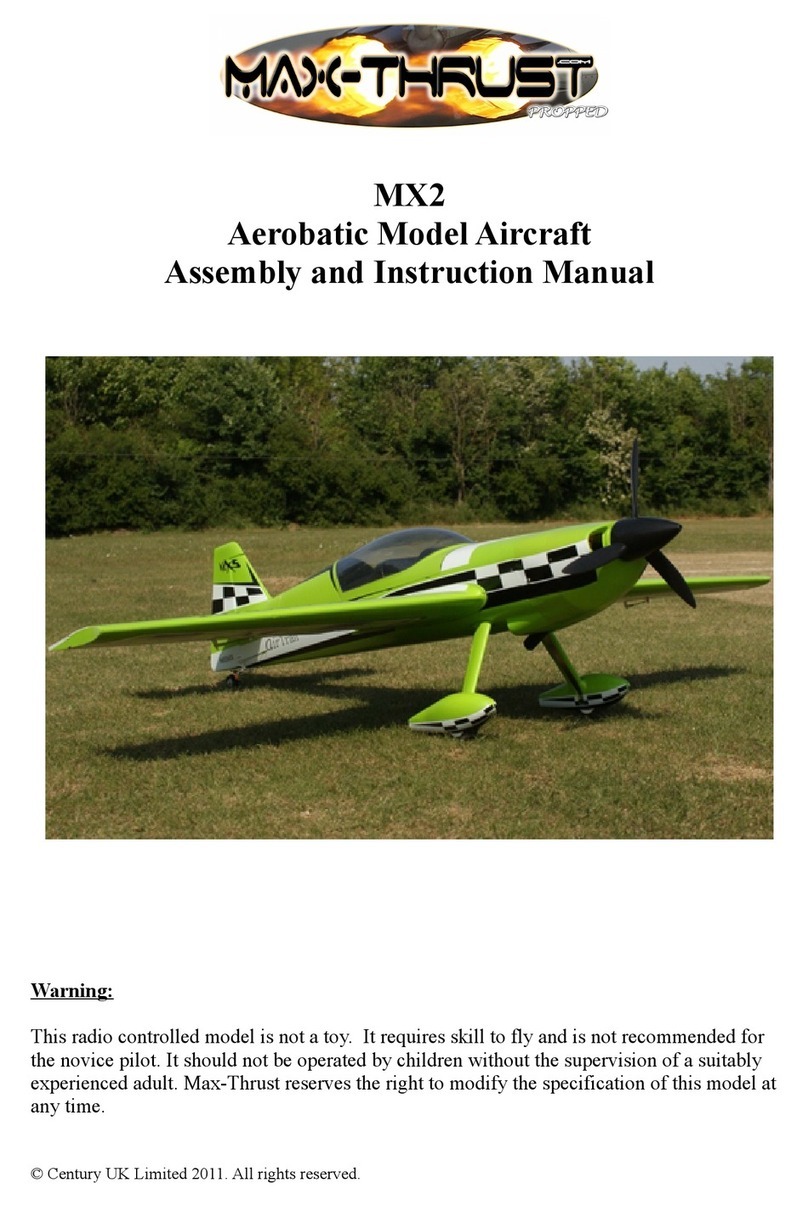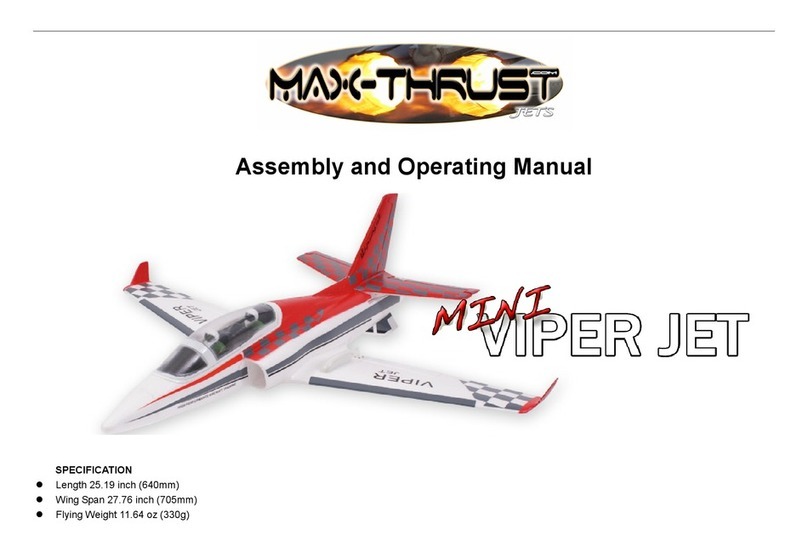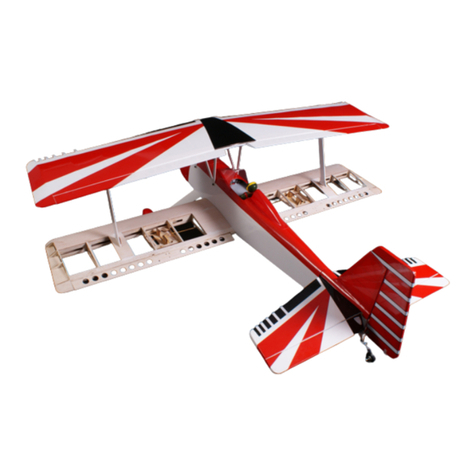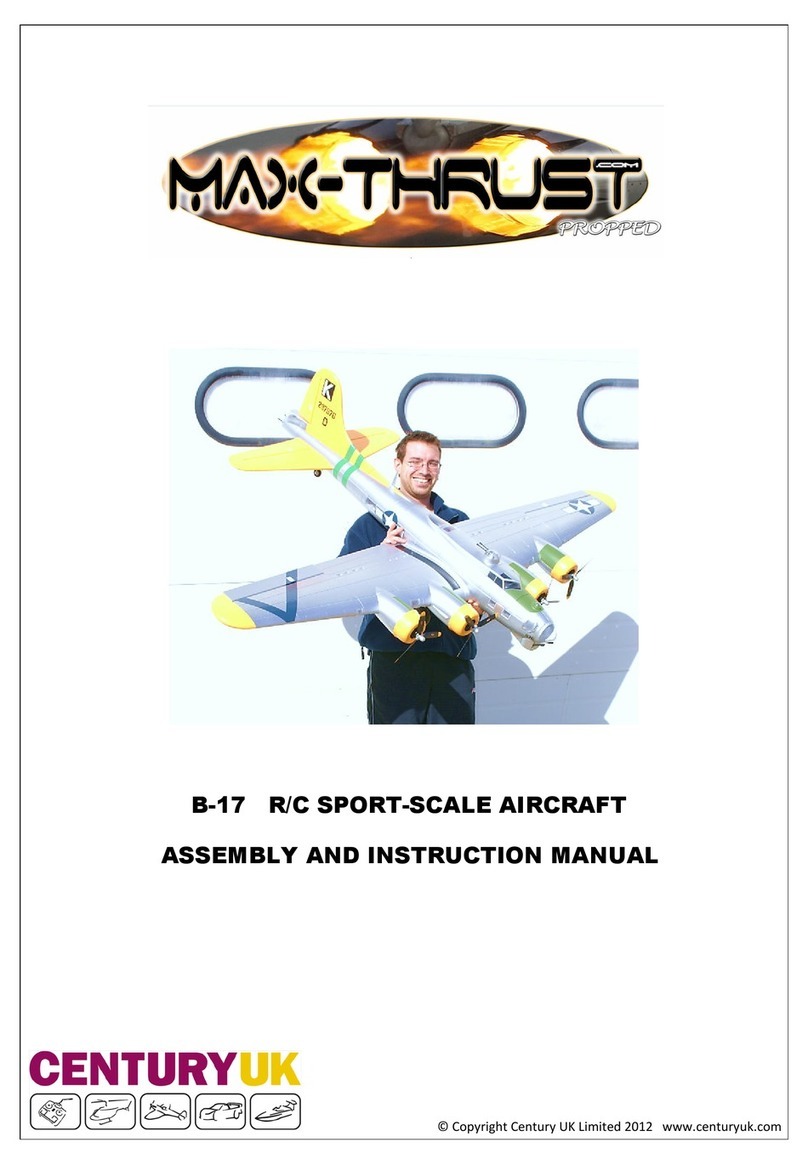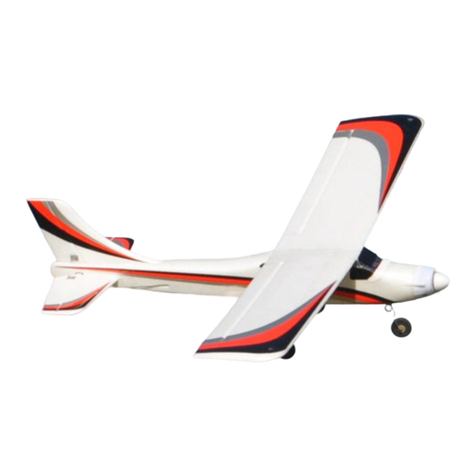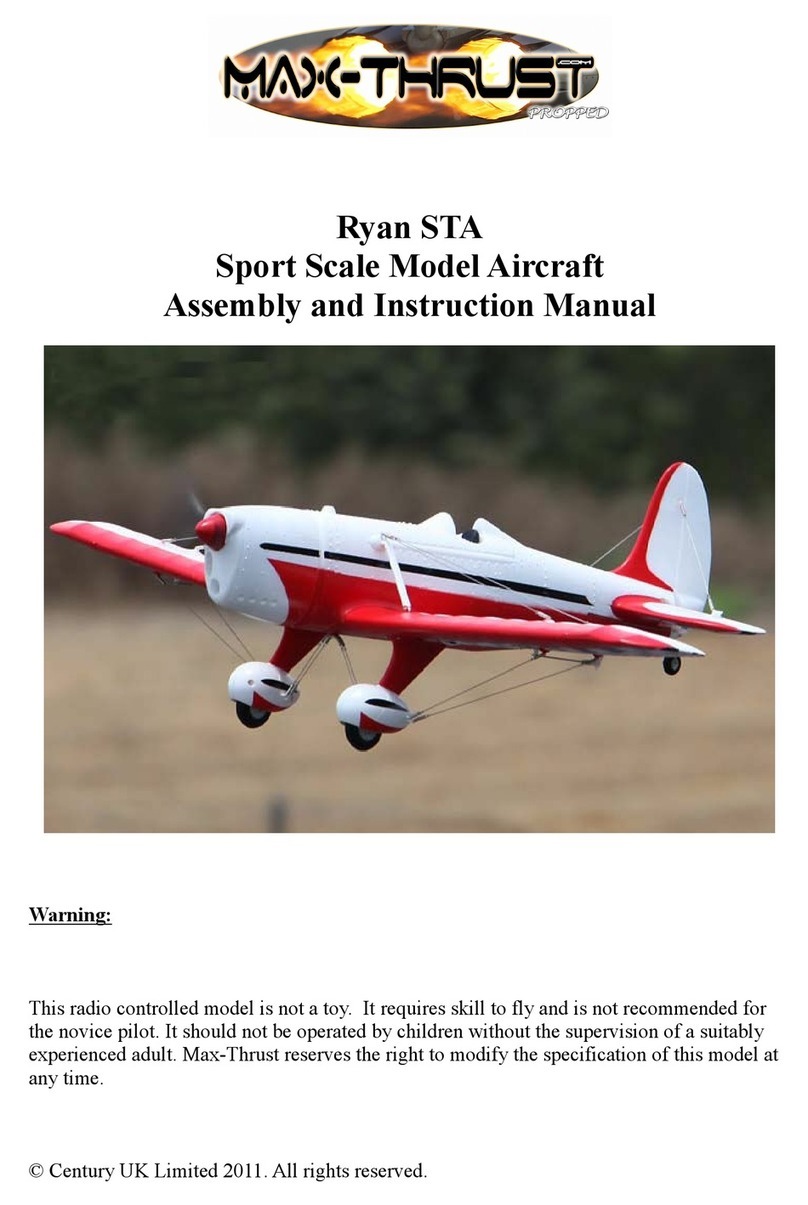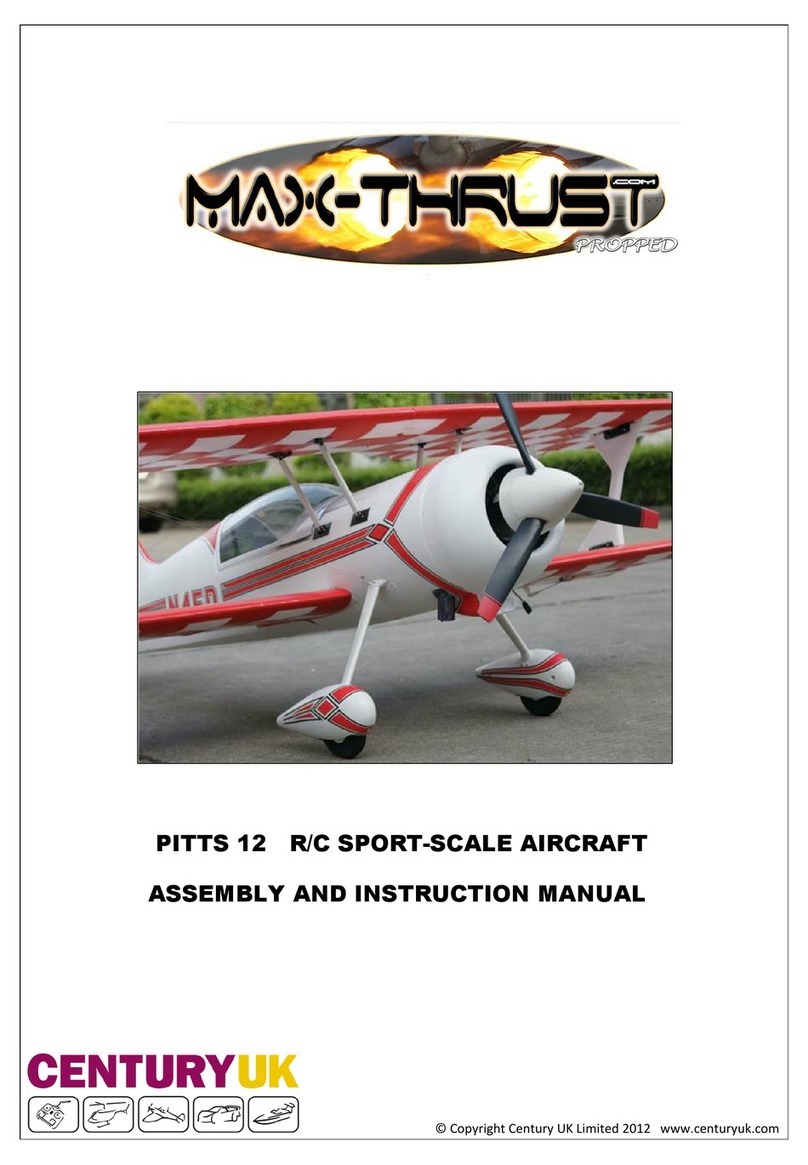do not fly this model in excessively strong winds, in the rain, or thunderstorms.
3. Do not fly or launch the model towards people.
4. Keep hands and face away from rotating propeller at all times.
5. We strongly recommend that all fixings and fasteners used in the construction of this
model are checked regularly for integrity. Failure to do so could cause a crash or injury
to yourself or those around you.
. We only recommend the use of 2.4GHz radio equipment with this model.
Disclaimer
Overview
Thank-you for purchasing this MAX-THRUST YAK 54 radio controlled model aircraft. The
YAK54 offers a stunning combination of terrific looks and sensational flight performance.
Manufactured from “EPOFLEXY” it is extremely robust, however, in the event of a “less than
perfect” arrival, we supply a range of spares to get you flying again in the shortest time. It is
capable of a wide range of amazing 3D aerobatic manoeuvres to thrill the experienced pilot,
but with reduced control throws it provides a solid and predictable flight performance,
perfect for the sports flyer. We are certain you will enjoy your new model, please take the
time to read this manual thoroughly and understand its contents completely prior to
commencing assembly.
Key Features
Powerful Brushless Motor
100A Brushless ES
Efficient 2 Blade Propeller
Pre-Installed servos
“Live” ontrol Surface Hinging
Durable “EPOFLEXY” onstruction
Steerable Tail Wheel
Superb Flight Performance
Specification
Wingspan: 1500mm
Length: 1210mm
Flying Weight: 2500g
Wing Loading: 57g/dm2
Motor: 4255 750KV Out-Runner
ES : 100A
Servos: 5 x 17g Metal Geared
Battery: 3350mAh 14.8v Li-Po (Not Included, Power-Tech Recommended)
Safety Precautions
1. This radio controlled model is not a toy. Used incorrectly it is capable of inflicting serious
injury to persons or damage to property. The owner/pilot assumes all responsibility for any
damage to persons or property resulting from the use of this product.
2. The manufacturer and distributor decline all responsibility for any liability arising from use
of this product.
3. It is very important that you follow all instructions for assembling and setting up of this
model. Failure to do so could result in a loss of control and possibly a crash.
